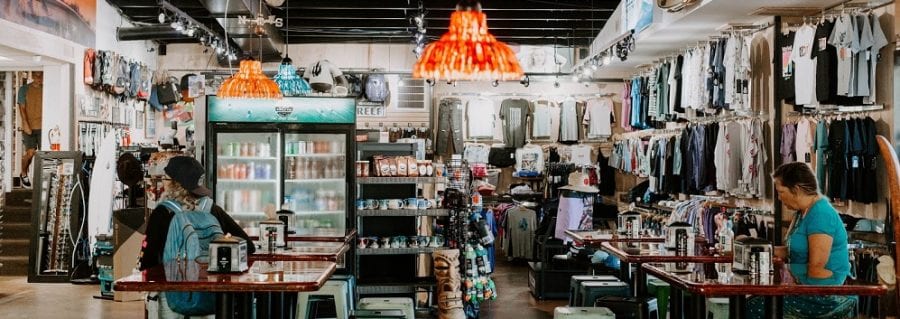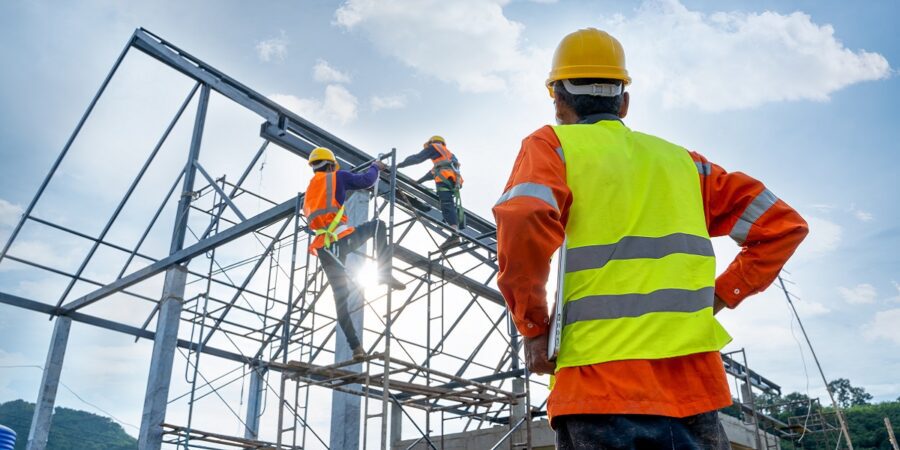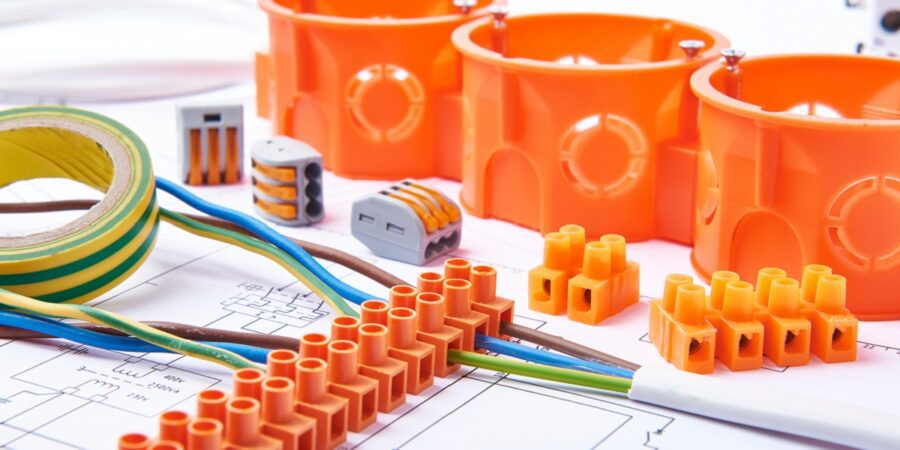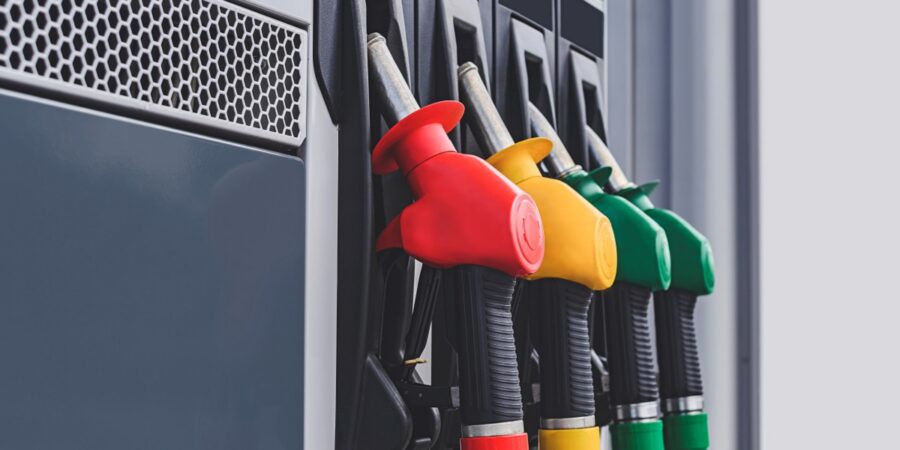
Our Blog
The Importance of Interactive Retail Experiences in Today’s Retail Landscape
9 Min Read
Written by: Parcel Pending
E-commerce sites, subscription-based sites, and even personalized monthly boxes are becoming the norm in retail shopping. Not only do in-person stores have to compete with these services, but they must incentivize people to leave the comfort of their homes to shop. At the same time, online retailers who are setting up a brick and mortar have to contend with their own set of problems. Just because they’ve identified a functional sales funnel on their website, doesn’t mean that translates to a great in-person shopping experience.
The keys to having a brick and mortar success are adaptability and interactive in-store experiences. For one, stores must keep up with the times. They can’t refuse to offer the services that e-commerce sites provide just because they’re proud to be a brick and mortar store. Adaptation is absolutely necessary if brick and mortar stores want to survive the rise of e-commerce. Second, stores need to stick out. They need to be memorable. This is the importance of bringing interactive experiences into the retail landscape.
Why Your Retail Store Needs Interactive Experiences
Imagine two boutique makeup brands. Both have competent marketing divisions, similar products, and comparable online sales. They each decide to open a brick and mortar in the mall. One store uses the traditional layout where customers peruse aisles, find shades they enjoy, and when they’re ready, they walk up to the checkout line to purchase.
The other store, hearing about interactive retail and deciding to give it a try, chooses to do something different. Maybe they have stations set up in the store equipped with AI and VR screens to help customers “try on” makeup without having to touch their face. Or maybe instead of regular employees, this store hires makeup artists to be at the ready for customers who want to receive a professional makeover. It doesn’t have to be all or nothing. Having something as simple as a “scan and ship” purchasing method within the store can be the interactive experience needed to one-up the competition.
It’s these types of experiences that transcend makeup stores and can be applied to all areas of retail. And the benefits are enormous:
Customers are engaged – Attention is a hot commodity right now. Viral videos don’t have to be educational, positive, or even remotely beneficial. They just have to be attention-grabbing. It works the same way for brands. Increasing the number of eyes on your brand is paramount for boosting sales. (Although, it does help if your brand is promoting positive messages behind this).
Increased customer return rate – For the makeup example above, customers could re-up their supplies online when they run dry. But if they want to try a new color or a new product, they’ll probably return to the store. If it’s fun and interactive to be there, customers will be glad to do their shopping out of the house.
Good Gab – If a store’s focus is to make their customers’ day fun, exciting, or memorable, this will result in customers sharing their experience with friends. If there was a flash mob, for example, they’re going to tell people about this wild experience. Not that you should immediately create a Facebook group to start a flash mob, but the idea is to make customers talk. To do that, make them happy, let them have fun!
Increased Brand Awareness – What logically follows from all this talk around your omnichannel retailing strategy? Increased brand awareness. Companies will have an easier time spreading their message and improving their marketing when customers are doing half the work for them.
Examples of Interactive Retail Experiences
Some retailers have already started riding this interactive train, providing customers with ways to connect with their brand. Some of these methods are through marketing techniques, new technology, or just revamping the store. If you’re wondering how to apply this to your retail store, here are some ideas to get you started.
Marketing Stunts
One way to build brand awareness is to use stunt marketing. Large retailers have the resources to put on a show, involve customers, and build buzz. This contrasts with normal customer experience in retail, which tends to be drab and uneventful. By making it loud, proud, and in- person, stores are able to capitalize on heavily foot-trafficked areas.
Test Case: Adidas
To market their new Adidas Originals, Adidas paired with Parcel Pending and Jam 3 to create a buzz-worthy experience for customers. At ComplexCon in Long Beach, California, attendees could scan a floating cube after downloading a special app. Then, throughout the day, people were chosen at random and instructed toward Parcel Pending smart lockers. After scanning their phones, the winners would then walk up to the corresponding smart locker which would pop open to reveal a brand-new pair of sneakers.
This method combined user engagement with a fun interactive experience. Plus, for the hundreds of attendees who received shoes, there’s a special joy in winning a prize. From this event, Adidas was able to generate buzz and grab people’s attention.
Combine Online and In-Store Qualities
It should be fairly obvious by now, but some retailers are still lagging behind this trend. Anything a customer can do in person, they should be able to do online. And vice versa. Of course, not everything can be combined, but successful stores have been bringing together the best qualities of both worlds.
Buy online and pick up in-store – BOPIS is a new trend for savvy customers, especially around the holiday season. For customers, this grants them all the benefits of in-store shopping, like seeing the item and comparing brands. However, they don’t have to go through the hassle of crowded aisles and long checkout lines. For retailers, this means additional purchases made on the spot.
Shop in-store and buy online – In a similar vein, some customers prefer walking through a store and then buying the items online. This also avoids checkout lines with the added benefit of not having to carry around purchased items. Instead, the items are shipped right to their home or nearest retailer smart locker.
Using Smart Lockers to Enhance Customer Experience
An important word to focus on when it comes to the customer experience is “convenience.” Shoppers embrace convenience the way kids embrace candy; the more the better. To facilitate in-store pickups, retailers have been opting into smart lockers. Smart lockers, like the ones made by Parcel Pending, allow customers to walk into stores, use an app on their phones to open a locker, and grab their online purchases hassle-free. There are a number of additional benefits to installing smart lockers in retailers.
Grocery Stores
Smart lockers pair exceptionally well with grocery stores, where lockers can be customized to different temperatures to hold specific items:
- Refrigerated and frozen products
- Hot items
- Produce
- Flowers
- Regular groceries
As online delivery apps like Doordash and Instacart become increasingly popular, customers are trending toward letting other people shop for them. Not only does this save time, but it saves the hassle of dealing with other shoppers.
Problem is, people prefer to pick out their own produce. Maybe the shopper prefers unripe green bananas, but the customer needed fully ripe bananas for banana bread. Whatever the case may be, refrigerated smart lockers allow customers to check through their grocery bags before it’s too late.
Plus, it’s a great way for stores to incentivize last-minute purchases while the customers are in the store.
Ensuring the Package Arrives Safely
The other benefit of smart lockers for consumers is to ensure the safe delivery of any package. Dropping off on doorsteps has been known to result in lost or stolen packages while dropping off at work can make people self-conscious about what they can and can’t buy online. Using smart lockers allow consumers to pick up in safe, convenient locations of their choice stress- Free. Retailers also benefit from placing smart lockers in their stores.
Micro shopping – When consumers use smart lockers to grab their online purchases in the retail space, many are incentivized to buy an additional item or two. This has been known to work especially well in convenience stores, coffee shops, and grocery stores. These micro visits (constituted as anything less than five minutes in a store) can be a simple method of funneling business into your shop.
Convenience – This is the word to focus on. Offering customers the ability to walk in, use their phone to open a locker, and then walk out, is providing autonomy to the customer. They have the power to choose how much interaction they want. With this added convenience, customers are happier to revisit and shop there again.
Employee vs Salesperson vs Expert
Some retail stores have found success in changing the way people think of the employees. By upgrading their job titles and job descriptions away from cashier or stock clerk to something empowering like department expert, customers are inclined to trust the employee’s opinion. If you’re a customer in a grocery store, speaking with a wine and spirits expert will give you the confidence to buy that slightly more expensive bottle. As for the employee, a little bump in pay could provide the motivation to become this expert.
Differentiate Your Hires
Instead of just blurring the lines between employees and sales associates, retailers have also tried focusing outside their regular hiring pools to find experts in a given field to improve the overall shopping experience. Some examples of this would be:
- Makeup artists for makeup stores
- Local chefs for demonstrations at grocery stores
- College athletes to put on clinics at sports outlets
- Beauty consultants at clothing retailers
Hiring these experts can create a rich, immersive experience for customers and keep them coming back. To see how this would work, here’s an example.
Beauty Consultants and Fashion Designers
If you manage a clothing retail store, you know how important it is for customers to be able to try on the clothes. People want these interactive retail experiences; they want to see how they’ll look before they wear it out in public.
Now, imagine if there were beauty consultants or fashion designers also walking the same aisles, assisting customers and helping them build outfits. Having an expert confirm a certain article of clothing is fashionable and looks great can be a trigger for customers to buy.
For this, some factors to consider are:
You get what you pay for – Offering the same minimum wage will result in the same employee with a different title. Instead, work out a commission-based deal and allow beauty consultants to monetize their talents. This will result in increased sales for the Store.
How to find these hires – Reach out to local beauty and fashion schools. College students who are studying to enter this field could use the extra cash on the side. Plus, they’re training to become experts; it’s a perfect match.
This method doesn’t solely apply to small, boutique stores. Large clothing retailers can benefit just as much, if not more, from having beauty consultants interact with customers. Creative employees will be able to string together multiple outfits from items across the store, giving a fresh perspective to the average customer. And, since this comes at no additional charge to the consumer, they’re incentivized to return for extra consulting.
Immersive Technology
As technology improves, businesses have graciously welcomed innovative products that will enhance customer experiences in retail. There are already quite a few products available right now, like the interactive online casino website Casinor.
Some examples are:
Athletic footwear – Athletic companies have treadmills that can measure a person’s walking pattern and suggest shoes with pads where they need them. If you have high arches or flat feet, this technology will detect it.
Self-checkout – Want to skip the long lines and check yourself out at a grocery store? Self-checkout machines are becoming highly popular for their efficiency in quick purchases.
AR mirrors – In fashion retailers, interactive mirrors are the next wave of technology. These will allow customers to try on different outfits without having to do any work.
Smart lockers – For customers who want to avoid the crowded aisles, smart lockers allow them to buy online and pick up in-store. This makes convenience part of the brand’s retail experience.
When to Implement Interactive Retail Experiences
With the rapidly changing landscape of retail today, some companies are struggling to keep up. Massive retailers are bringing in fewer customers and are forced to close stores nationwide. Implementing interactive retail experiences can help turn this around.
By improving the shopping experience for your customers and making it memorable in the retail space, stores can incentivize customers to take time out of their schedule to do their shopping in person. The key is to adapt to the needs of the consumer. That means streamlined sales, smart lockers for safe and convenient pickups, and interactive retail experiences for customers.
Sources
- Forbes. What Customers Want And Expect.
https://www.forbes.com/sites/shephyken/2018/08/05/what-customers-want-and-expect/#70ee34097701 - CNBC. There’s never been this kind of surge in last-minute shoppers picking up online orders.
https://www.cnbc.com/2018/12/21/retailers-see-surge-in-last-minute-shoppers-picking-up-online-Orders.html - The Atlantic.
https://www.theatlantic.com/technology/archive/2019/02/online-grocery-shopping-has-been-slow-catch/581911/





